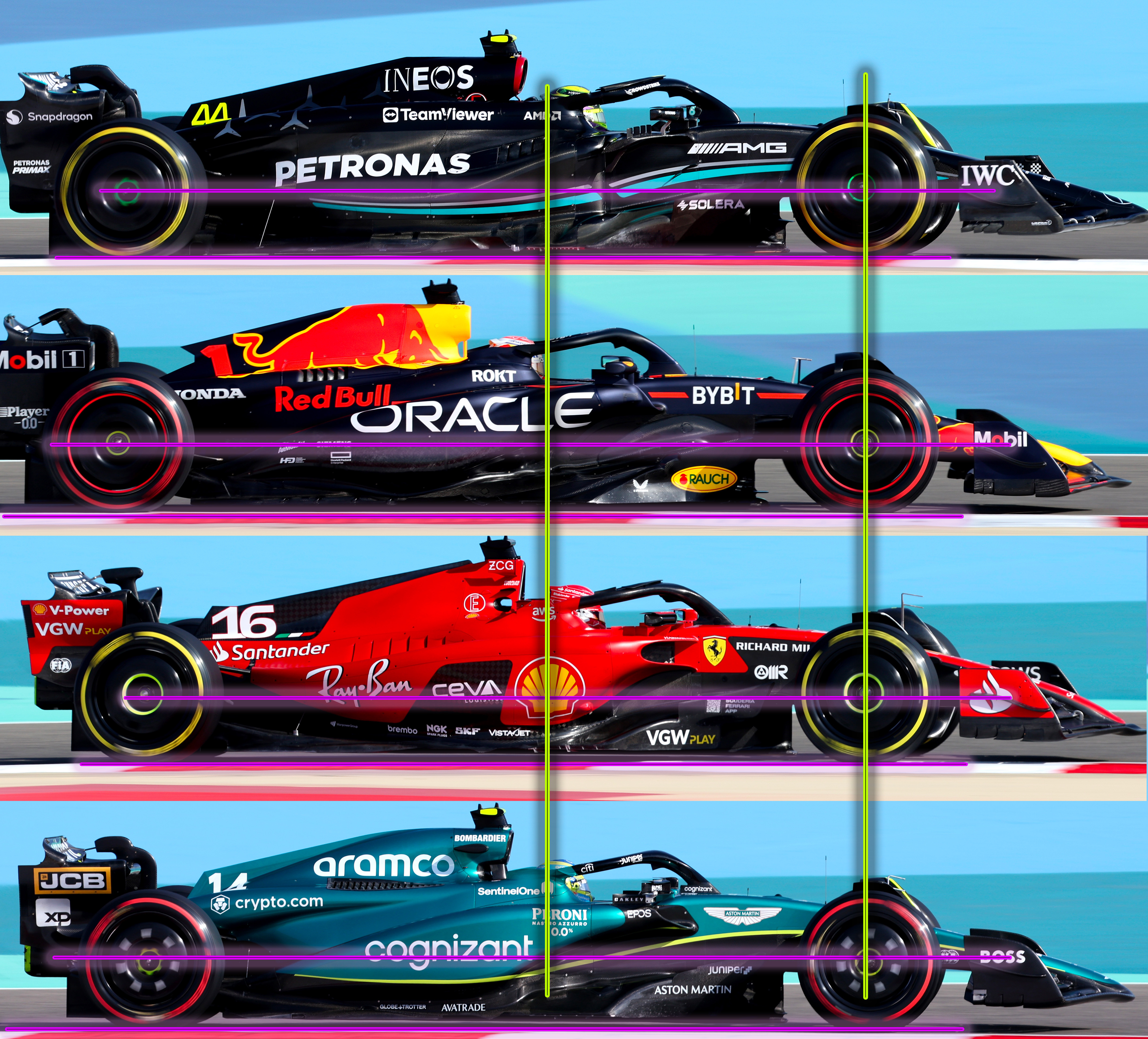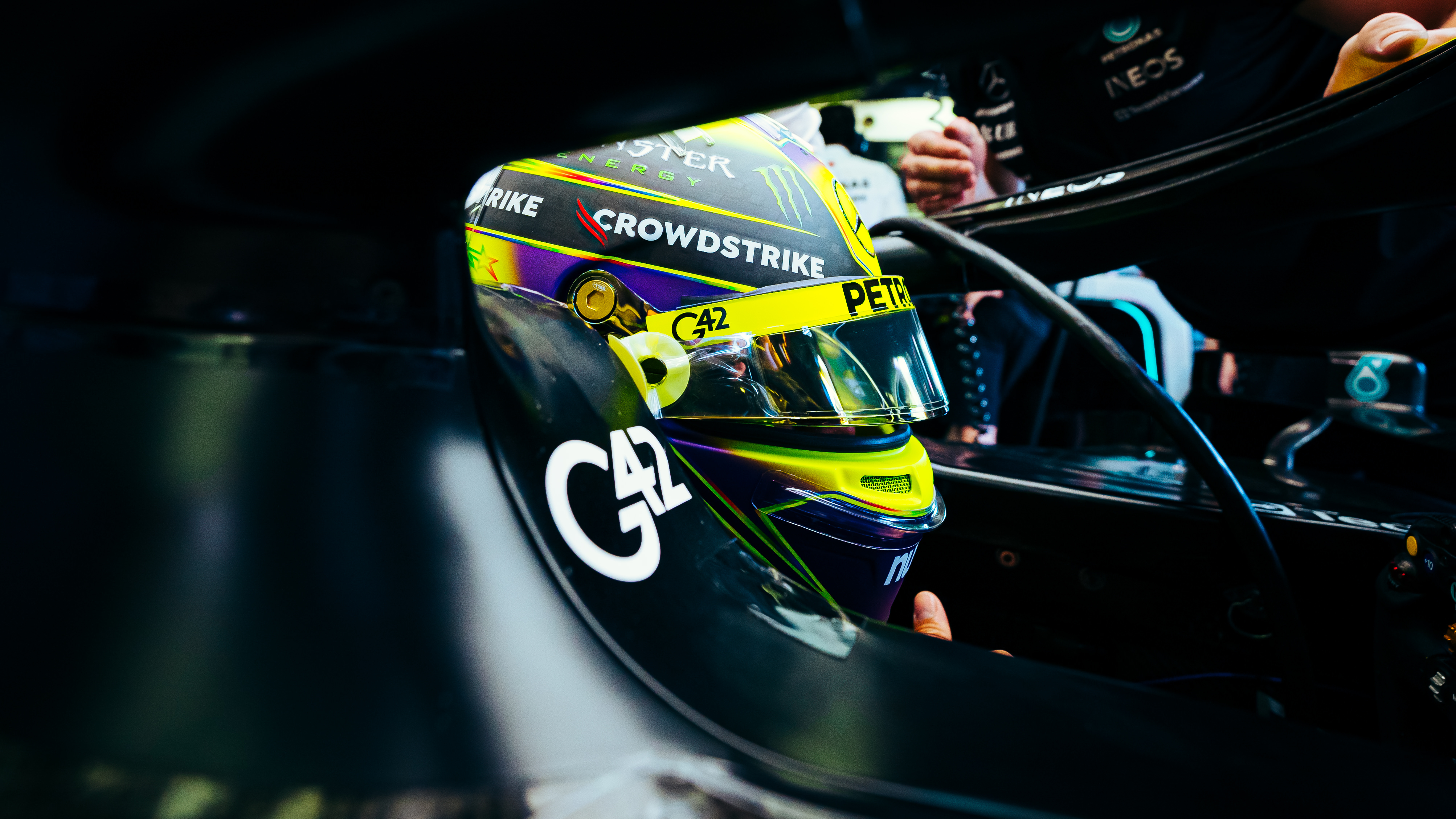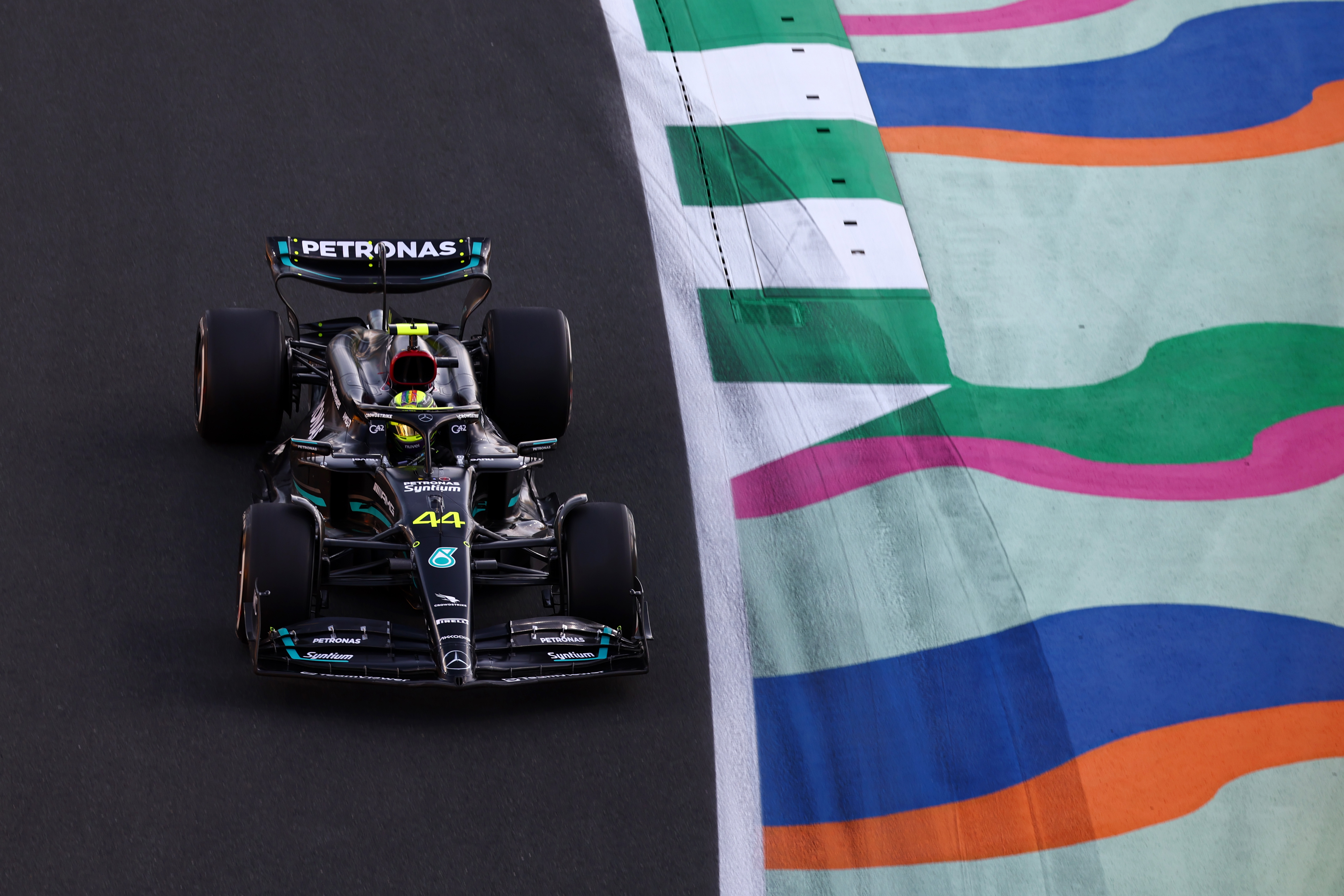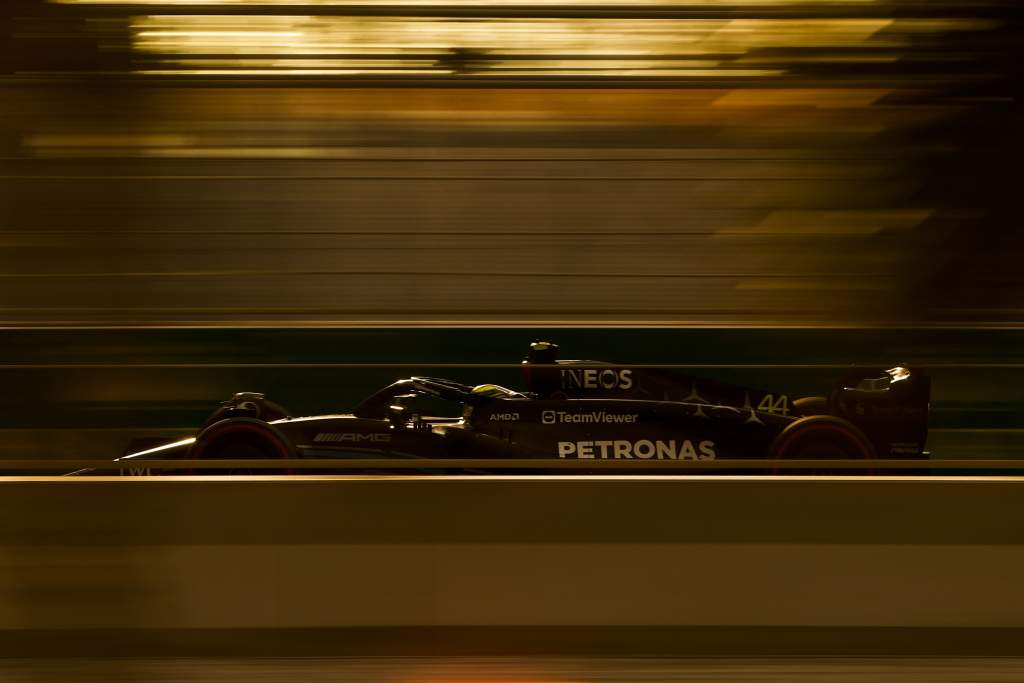Up Next

Lewis Hamilton has revealed he ‘really struggles’ with the further-forward seating position of Mercedes’ 2023 Formula 1 car and that it “100%” needs to be changed for future designs.
For the new technical rules introduced last year, Mercedes developed a car with the cockpit further forward – most likely required to enable it to go with the design of an exposed side impact structure and minimised sidepod.
That cockpit position has been retained on the 2023 W14, and technical director Mike Elliott confirmed at testing in February it was already “quite forward last year”.
Hamilton is not satisfied with how this seating position hinders his ability to feel the car’s behaviour, and the suggestion is he wanted it to be changed but accepted it because it was key to a design concept that the team had faith in.
It points to a specific discomfort Hamilton has within the wider problem of Mercedes’ incorrect car concept lacking performance.
The seven-time world champion explained on Thursday at the Australian Grand Prix it has contributed to his struggle to get the most out of the W14 compared to team-mate George Russell.

“We sit closer to the front wheels than all the other drivers,” said Hamilton. “Our cockpit is too close to the front.
“When you’re driving, you feel like you’re sitting on the front wheels which is one of the worst feelings to feel when you’re driving a car.
“If you were driving your car at home, and you put the wheels right underneath your legs, you would not be happy when you’re approaching the roundabout!
“So, what that does is it just really changes the attitude of the car and how you perceive its movement. And it makes it harder to predict, compared to when you’re further back and you’re sitting closer, more centre.
“It’s just something I’ve really struggled with.”
Asked by The Race if Hamilton had accepted that Mercedes would retain the seating position because of the team’s belief it was part of making the fastest possible car, he replied: “Yeah, I listened to the team and that was the direction that they said that we should go.
“Had I known the feeling that I would have in it, it wouldn’t have happened.

“And it has to change for the future. 100%.”
This may be exaggerating Hamilton’s vulnerability to the W14’s characteristics.
He has suggested that the Mercedes does the “opposite of what we want”, and and his explanation appears to tie in with problems Mercedes has in optimising and controlling the aerodynamic centre of pressure.
This is effectively the average of the downforce produced at the front and rear of the car and a vital component of a car’s balance and whether it understeers or oversteers.
The emphasis on ground-effect aerodynamics on the new cars and how hard the floors are worked means the centre of pressure is more rearward than before, from the front of the floor to the throat of the diffuser slightly further back.
It also means the centre of pressure moves more as it has further to travel when it shifts from back to front.
Hamilton feels the Mercedes aero characteristic is “too far forwards” instead of providing a stable rear on entry then “moving rearwards” through the corner, allowing for rotation in a controlled way.
He says that results in the car being “on the nose”, as in very sensitive on turn-in with a rear end that’s too weak to handle it.

Coupled with the poor feeling he gets from the car’s seating position, Hamilton may be struggling to deal with the rear instability this creates as well as he historically has.
“We still have generally a very strong front and not as good a rear as we would hope to have,” Hamilton said of the W14 compared to the W13.
“If you look at the Red Bulls, the places where they get on the power earlier and the speed they can take through the corners is just because they have a much stronger rear end.”





